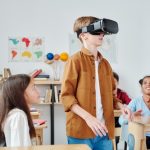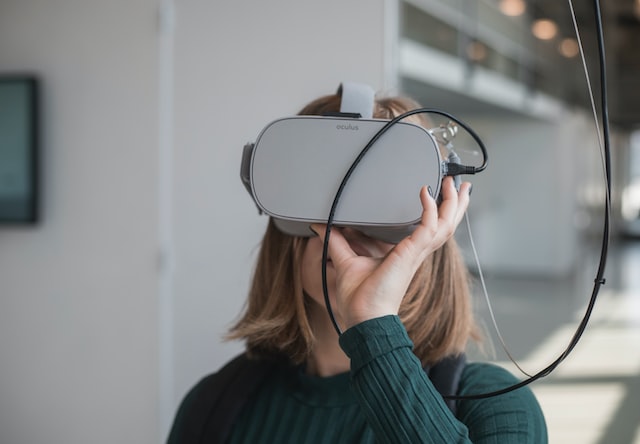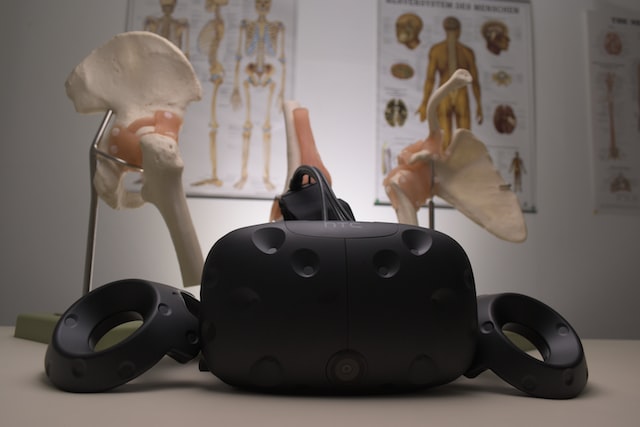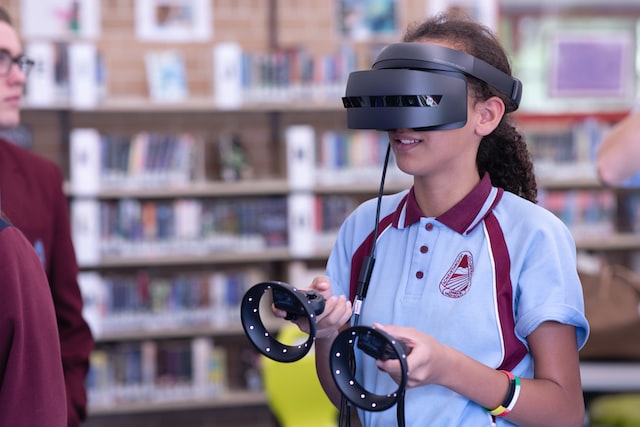
5 Ways Virtual Reality Enhances Learning
March 14, 2023
Only a few years ago, virtual reality (VR) is just a concept that you can see in sci-fi movies. When the first virtual reality headset was introduced to the market, people started to believe that it could possibly be more than just a concept on the big screen. Luckily, the idea is no longer as hard to grasp in recent years. After all, we are in an era where people communicate with smartphones where talking and seeing people in real-time is possible.
Today, the VR and AR industry is one of the fastest-growing markets in the world. With a revenue of $16.04 billion in 2020, the projection for the industry for 2023 is pegged at $31.12 billion. That is expected to almost double by 2027. These impressive numbers have more to do with how the industry has really captivated the global audience.
The fact that the technology is potentially feasible for almost every industry out there imaginable just adds to this unwavering interest. While gaming remains the top industry where VR is making waves, education is coming in at a close second. With the promise of immersive experiences, it’s no surprise how many educational institutes are adapting VR learning into their respective curriculum as well as the introduction of VR schools in the scene. Read on as we explore how VR is influencing the future of learning.
There’s a prevalent belief that education is one of the fundamental human rights — that everybody should get equal access to it no matter where they are in the world, their race, country, or color. Unfortunately, this isn’t really what’s being reflected in reality. Most of the time, students are unable to pursue higher learning because they do not have access to the necessary knowledge source.

VR learning is expected to help bridge that gap. Through the technology, students who are prevented from pursuing higher learning via the traditional way can now get access to any concept, subject, or course they want to learn. With the recent global pandemic, people realized that learning does not have to be confined within the four walls of a physical classroom.
What’s even better is that VR elevates the learning experience. Where the usual distance learning modes involve video calling and virtual classrooms, VR makes the learning experience more realistic. Through its simulations and immersive setups, learning becomes more appealing and interesting to the students.
Medicine and engineering — two of the hardest subject out there, are known for requiring constant practice. Mastering the field requires more than just talent. In fact, a good chunk of what learners in these fields need is constant practice. This means that learners need to be immersed in various actual real-life scenarios to acquire real-world skills that they can then apply once they start practicing the field.
In traditional learning, medical students would need to spend a good chunk of their time in controlled environments to master their field. From dissecting the various parts and organs of the human body to performing complex operations, all these require long hours of practice and not to mention laboratory equipment and resources to carry out.
With virtual reality, however, this is made so much easier. As VR technology can recreate anything about the human body from its biggest to its most intricate organs, students can practice anything about the human anatomy as much as they want. The technology even allows for the creation of all sorts of hypothetical situations, which allows students to test their skills, knowledge, and response to these situations.
They can also carry out and repeat experiments as many times as they want. After all, everything they need will be in the virtual setting. Concerns about resources, tools, and equipment will no longer come into play as virtual setups can be repeated as many times as a learner wants without incurring additional costs.

VR is widely used in gaming as its realistic environment and responsiveness keep players hooked. However, these very same attributes make it as useful in the field of education. With the technology, it is now possible for educational institutions to come up with courses that feature not just topics that are fully animated but are interactive as well.
With the technology, it is possible to gamify the different learning exercises to make them more engaging to the students. With gamification, teachers now have numerous creative ways to make instruction livelier and more fun. Exercises and quizzes can now be gamified, making it easier to impart knowledge to learners in a manner that they will find more interesting.
Aside from benefiting those engaged in distance and virtual learning, VR is also transforming homeschooling setups. Gone are the days when learners are faced with boring modules and reading materials. VR learning, with its gamification features, now makes it possible for students to enjoy the learning experience and stay engaged and captivated throughout.


In many traditional classroom settings, it’s quite common to see students who are having a challenging time interacting with their peers. Different people have different social skill levels, after all. VR learning allows individuals to hone their social skills. Since the VR environment allows users to set up hypothetical situations, it is possible to hold conversations and polish one’s communication skills in a safe setting.
In addition, educators can set courses up where learners are encouraged to collaborate and work with other virtual learners. Designing coursework to involve incorporating different inputs from different individuals will teach students how to interact with each other, improve their communication skills, and hone them to be better team players in group settings.

Oftentimes, many people get discouraged from pursuing a higher level of education, especially if the subject is taught in a language that they are not very proficient with. While English is considered a universally spoken and understood language, there are still certain parts of the world where people may struggle to hold conversations with the language.
VR technology, however, eliminates that problem. With VR learning, it is possible to implement different kinds of languages into the software. This means that despite not speaking the mother tongue of the coursework you are interested in, you will still be able to understand everything as there will be automatic translations of what is being taught. With traditional learning, moving to a different country to study would mean having to learn the language. With VR, you don’t even need to leave your country to study. And you won’t even need to learn the language anymore.
It is quite impressive how much VR technology has accomplished since its inception. What’s even better is how the technology is still evolving and for the better! With education being considered the ultimate equalizer, modernizing how learning is coursed through virtual reality is expected to open more doors of opportunity to people who used to not have any in the past. At its current rate, it is safe to say that the future of education is even brighter with VR.